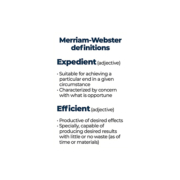Will the Inflation Reduction Act stifle pharma innovation?
Will the Inflation Reduction Act stifle pharma innovation?
By Miruna Sasu, Ph.D, President and CEO of COTA, Inc.
In August of 2022, Congress passed the Inflation Reduction Act (IRA), a wide-ranging law designed to strengthen the national economy in the long term, protect the environment, and combat post-pandemic inflation for consumers.
The legislation specifically calls out high and rising drug prices as a major problem for Americans and includes several provisions to dramatically change the way pharma companies work with Medicare around the purchasing and reimbursement of drugs.
Starting in 2026, the federal government will be required to negotiate prices for some high-priced and/or high-volume drugs covered under Medicare Part B and D. And beginning in 2023, pharma companies will need to pay rebates to Medicare if prices rise faster than inflation.
Combined with new out-of-pocket caps on drug spending for Medicare beneficiaries — and the tendency of commercial payers to follow Medicare’s lead — these changes could have a major impact on the way pharma companies manage their revenue streams.
While lower drug prices are a victory for patients, the legislation’s specific mechanisms for controlling costs could have dire unanticipated consequences for pharmaceutical innovation. Pharma companies looking to compensate for lower sales revenues may turn to trimming down their biggest cost centers — drug discovery and clinical trials — as well as any budget dedicated to improving efficiencies in their business. The result could be fewer new drugs, less innovation, and reduced access to breakthrough therapies, particularly for populations that already experience health equity barriers.
To maintain the pace of innovation and ensure equitable access to new therapies over the coming decades, pharma companies will need to embrace new data-driven strategies and partnerships that bolster the drug discovery pipeline even in the face of financial uncertainty.
Forecasting the impact of the IRA on drug development
Dozens of new therapies are approved every year in the United States, thanks to significant advances in clinical knowledge and the data science underpinning the innovation process. Over the past decade, global regulators have approved 410 different drugs, approximately three-quarters of which are approved in the U.S. first.
Pharma companies spend billions of dollars making these drugs for patients who often have exhausted all other options, and they must be careful about selecting which molecules to pursue through the expensive, complex, and time-consuming development process.
Currently, pharma companies tend to enjoy healthy margins once these therapies make it to market — and just like every other business, they would like to retain as much of their revenues as possible. Giving Medicare the power to negotiate drug prices may cut into these margins, resulting in pharmaceutical companies reducing the number of molecules they invest in.
The Congressional Budget Office (CBO) acknowledges this potential side effect, stating that the number of new drugs introduced to the market will likely be at least 1% less than the current average. The Pharmaceutical Research and Manufacturers of America (PhRMA), however, predicts the shortfalls in new drugs to be significantly higher as pharma companies see reductions in revenues of anywhere between $200 billion and $455 billion over the next 10 years.
Fewer new drugs on the market means fewer options for patients who lack existing treatment options for their diseases. Pharma companies may also consider reducing production volume, which could create shortages for higher-demand therapies and leave traditionally underserved populations out of the loop for supplies, or scaling back on their efforts to improve diversity and inclusion in clinical trials — something the industry has just started to invest in.
As the law comes into effect over the next few years, lawmakers and pharmaceutical executives will have to reckon with the question of whether lower costs for some existing drugs is worth the price of sacrificing innovation and access for others.
Strategies for maintaining the innovation ecosystem in the IRA era
Narrowing the discovery pipeline isn’t the only way to respond to the threat of restricted revenues. Instead, pharma companies should investigate emerging strategies for improving efficiency and reducing costs while maintaining the highest standards of inclusivity during clinical trials and post-market surveillance.
This could include adopting cutting-edge technologies to optimize the drug discovery process, taking advantage of new partners to support clinical trials, and leveraging real-world data and other promising analytics approaches to create more inclusive, less expensive pathways to drug approvals and monitoring. Over time, adopting such innovative approaches could also likely help drive down drug prices.
For example, pharma companies could consider partnering with the growing number of retail pharmacies moving into the clinical trial space. These companies are looking to conduct clinical trials at their own care sites, which can spread the financial burden of running clinical trials while giving drug developers access to previously unreached patient populations, such as those in rural areas and those facing socioeconomic challenges.
Manufacturers can also harness significant advances in the use of artificial intelligence for identifying promising molecules early in the discovery processes and the power of real-world data to support more efficient, effective trials via expanded identification of potential participants, the use of synthetic control arms, and potential for more robust safety and efficacy research once the drug is in the marketplace.
As the IRA comes into effect, pharma companies will need to take a careful look at how to best navigate the changing financial environment while continuing to be a driving force in clinical innovation and better patient outcomes. Investing in next-generation partnerships and advanced data-driven approaches to discovery, development, and testing could make it easier for pharma companies to continue offering promising drugs to patients at scale without compromising on any part of the process.
 |
Miruna Sasu, Ph.D is president and CEO of COTA, Inc. She has more than 20 years of experience at leading life science organizations such as Johnson & Johnson and Bristol-Myers Squibb. Most recently, Miruna was serving as the head of Johnson & Johnson’s Clinical Trial Feasibility and Advanced Analytics team where she drove global adoption of integrated real-world data and innovation strategies across several therapeutic areas.
Sasu is an accomplished executive with a track record of success when it comes to driving broad-based digital innovation. Miruna brings deep experience in the utilization and scaling of emerging innovations to advance drug portfolios. She also has both a Ph.D. in biology and statistics, and a master’s in business administration. |











